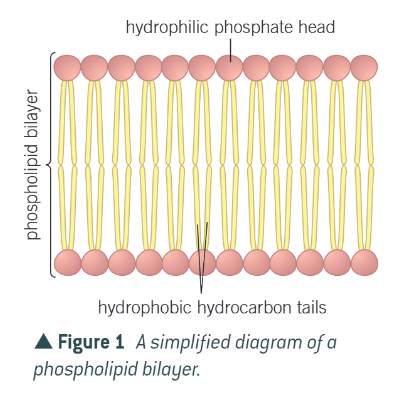3.2.3 - transport across cell membranes
1/11
There's no tags or description
Looks like no tags are added yet.
Name | Mastery | Learn | Test | Matching | Spaced |
|---|
No study sessions yet.
12 Terms
The arrangement and any movement of phospholipids, proteins, glycoproteins and glycolipids in the fluid-mosaic model of membrane structure. Cholesterol may also be present in cell membranes where it restricts the movement of other molecules making up the membrane.
describe the structure of a phospholipid (two main components)
has a hydrophilic head
and two hydrophobic tails
how are the phospholipids arranged in the cell-surface membrane
in a phospholipid bilayer
why do the phospholipids arrange themselves like this
the hydrophilic heads are attracted by the water present on either sides of the membrane —→ so they face outward
the hydrophobic heads are repelled by the water present on either sides of the membrane —→ so they face inward
diagram of a phospholipid bilayer

function of phospholipids in the cell-surface membrane (i.e. what does it allow to move in / out?)
allows lipid-soluble substances (e.g. O2, CO2, steroid hormones) to move in + out of the cell
prevents water soluble substances entering + leaving the cell
why can lipid-soluble substances move through the cell-surface membrane
they are hydrophobic / non-polar
so they dissolve in lipids rather than water
the core of the membrane = also non-polar (bc of the hydrophobic tails facing inward)
so molecules can dissolve in the lipid bilayer easily, and can move through directly by simple diffusion (w/o the need for a transport protein)
phospholipids make the membrane f________ and s___- s__________.
flexible and self-sealing
in the phospholipid bilayer, there are proteins interspersed throughout it